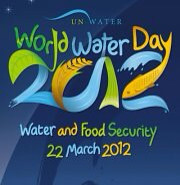WASHINGTON -- Fresh-water shortages and more droughts and floods will increase the likelihood that water will be used as a weapon between states or to further terrorist aims in key strategic areas, including the Middle East, South Asia and North Africa, a U.S. intelligence assessment released Thursday says.
Although "water-related state conflict" is unlikely in the next 10 years, the assessment says, continued shortages after that might begin to affect U.S. national security interests.
The assessment is drawn from a classified National Intelligence Estimate distributed to policymakers in October. Although the unclassified version does not mention problems in specific countries, it describes "strategically important water basins" tied to rivers in several regions.
These include the Nile, which runs through 10 countries in central and northeastern Africa before traveling through Egypt into the Mediterranean Sea; the Tigris-Euphrates in Turkey, Syria and Iraq; the Jordan, long the subject of dispute among Israel, Jordan and the Palestinians; and the Indus, whose catchment area includes Afghanistan, Pakistan, India and Tibet.
"As water problems become more acute, the likelihood ... is that states will use them as leverage," said a senior U.S. intelligence official who briefed reporters on condition of anonymity. As the midpoint of the century nears, he said, there is an increasing likelihood that water will be "potentially used as a weapon, where one state denies access to another."
"Because terrorists are looking for high-visibility structures to attack," the official said, "water infrastructure" could become a target.
Release of the assessment coincides with Secretary of State Hillary Rodham Clinton's scheduled announcement of a new public-private program to use U.S. knowledge and leverage to help find "solutions to global water accessibility challenges, especially in the developing world," a State Department release said.
The assessment was compiled by the office of the Director of National Intelligence, with contributions from the Defense Intelligence Agency, the CIA and other agencies. It assumed, as a starting point, that there would be "no big breakthroughs" in water technology over the next decade and that countries would continue their present water policies. More





